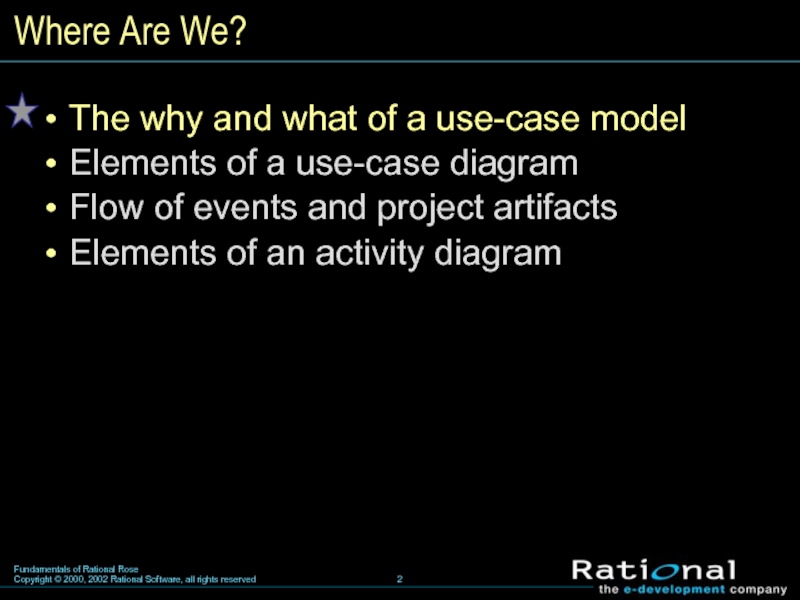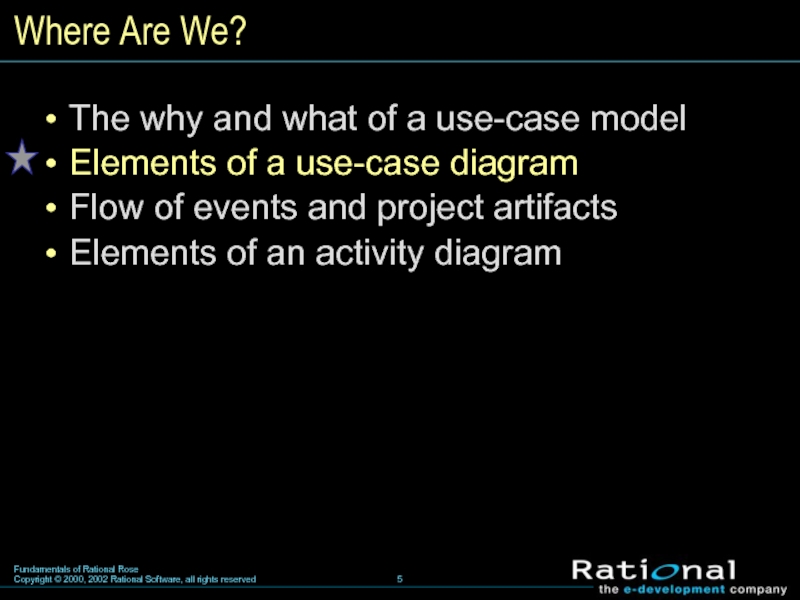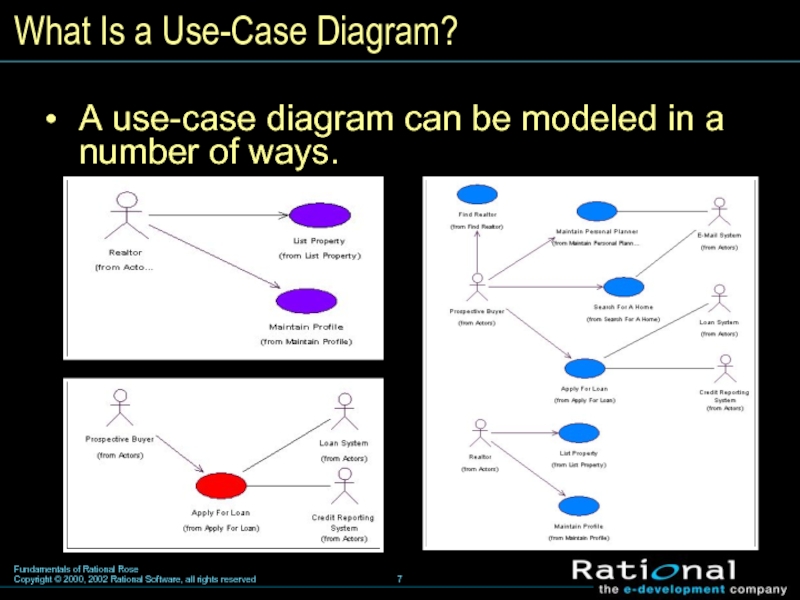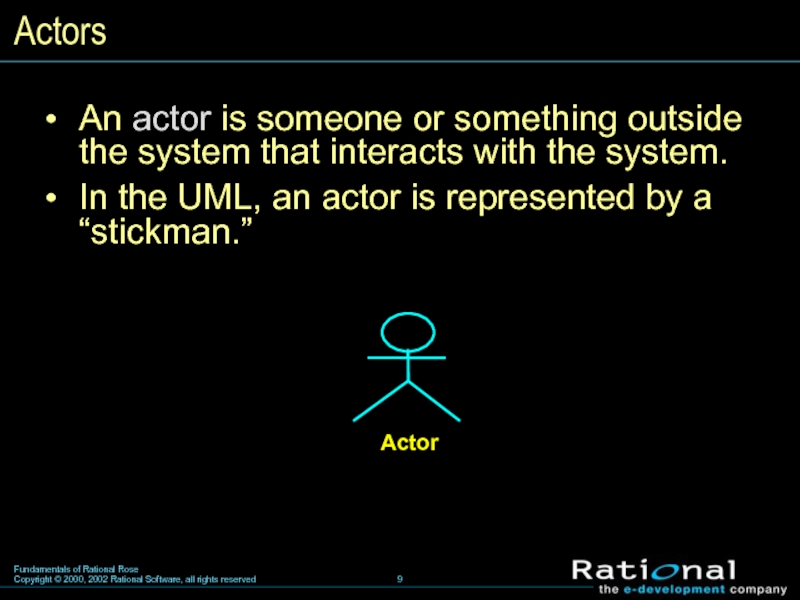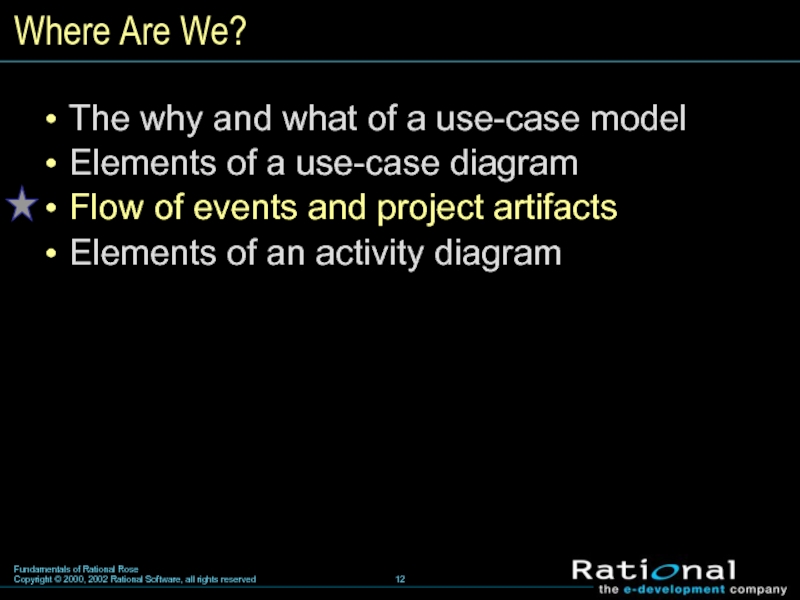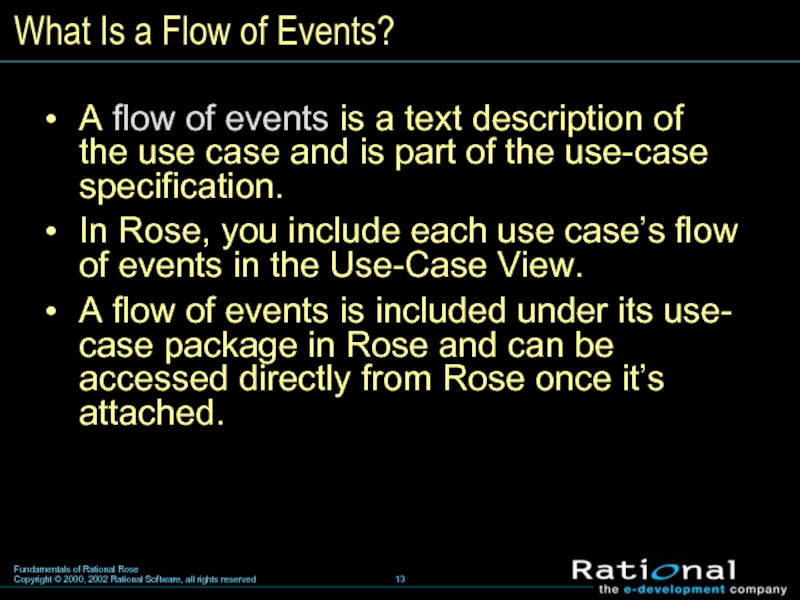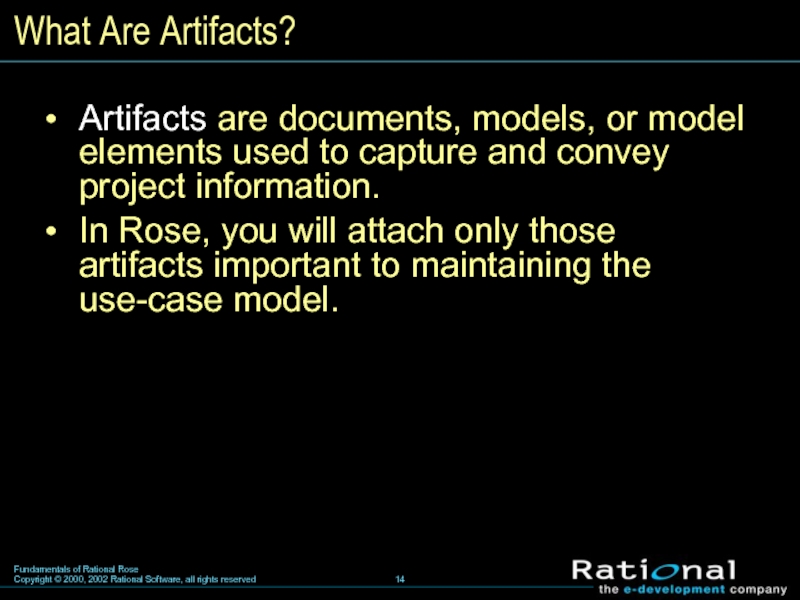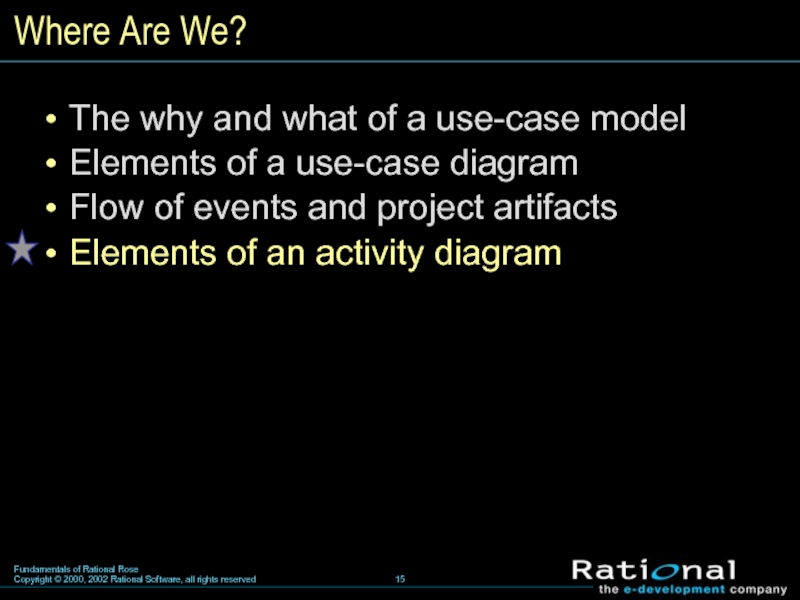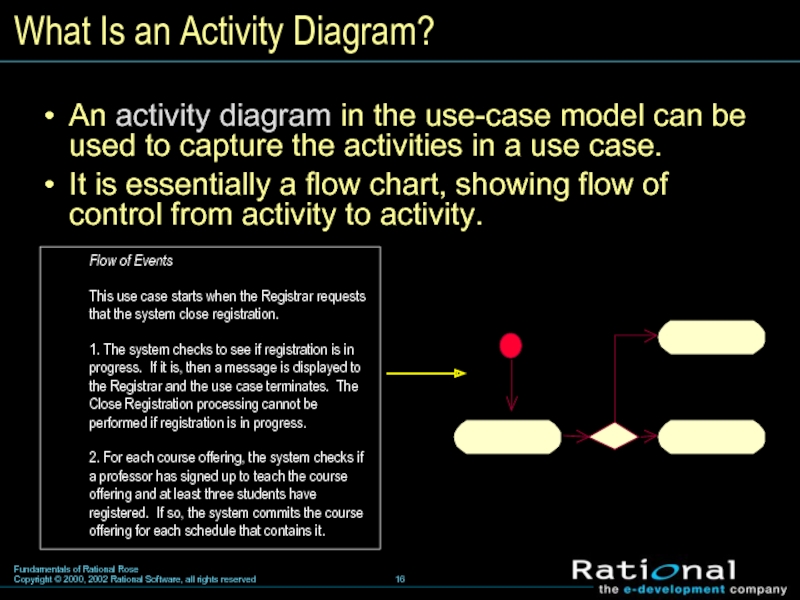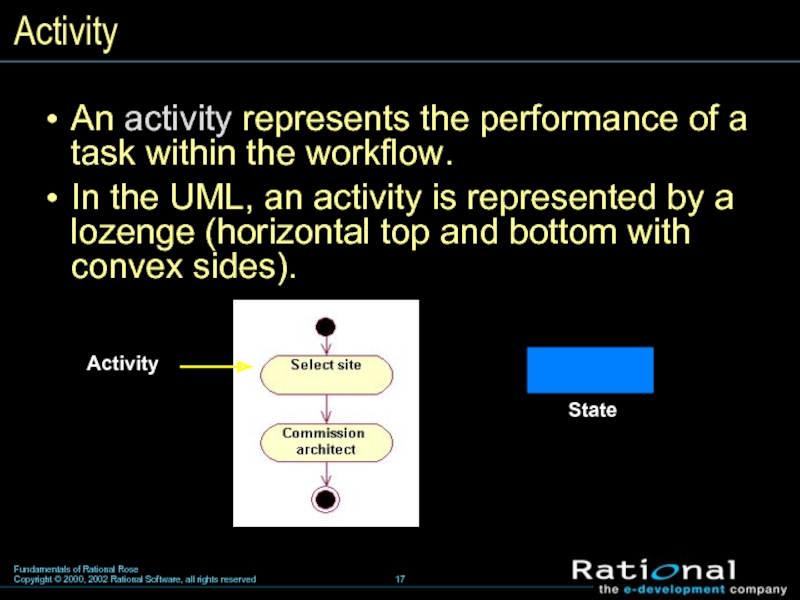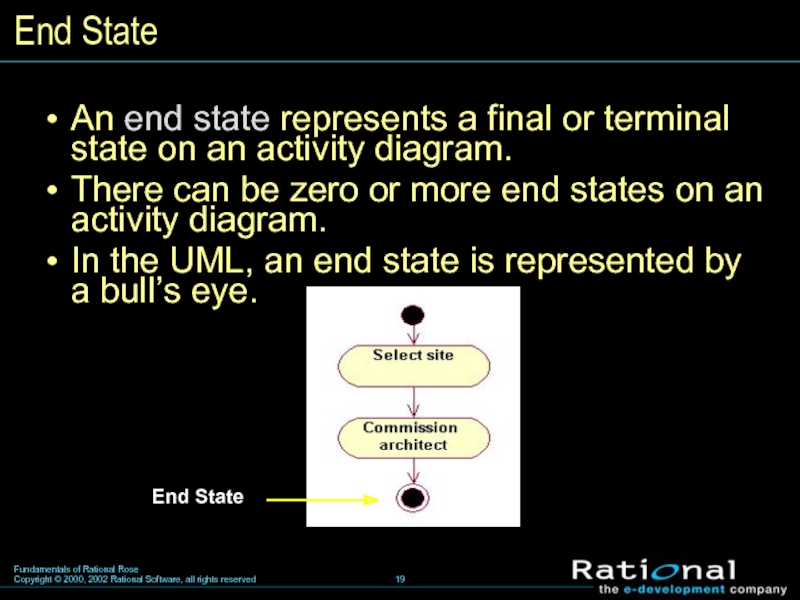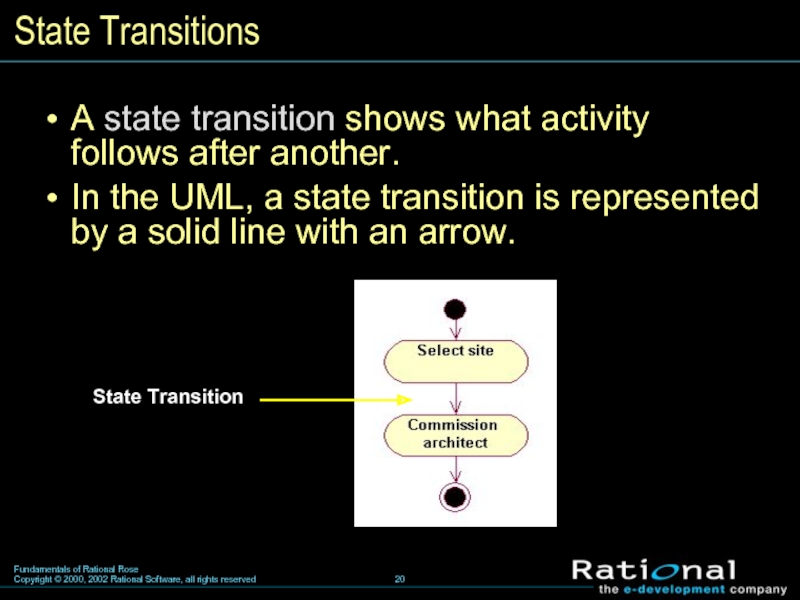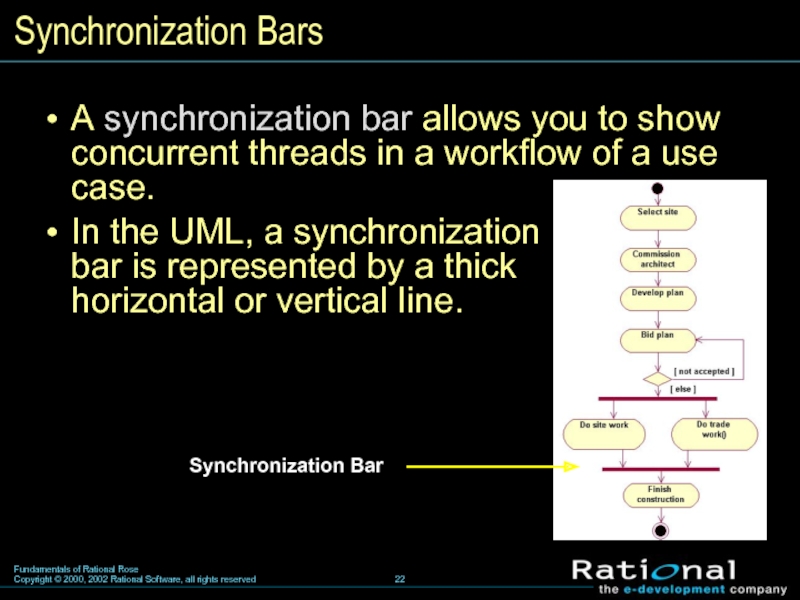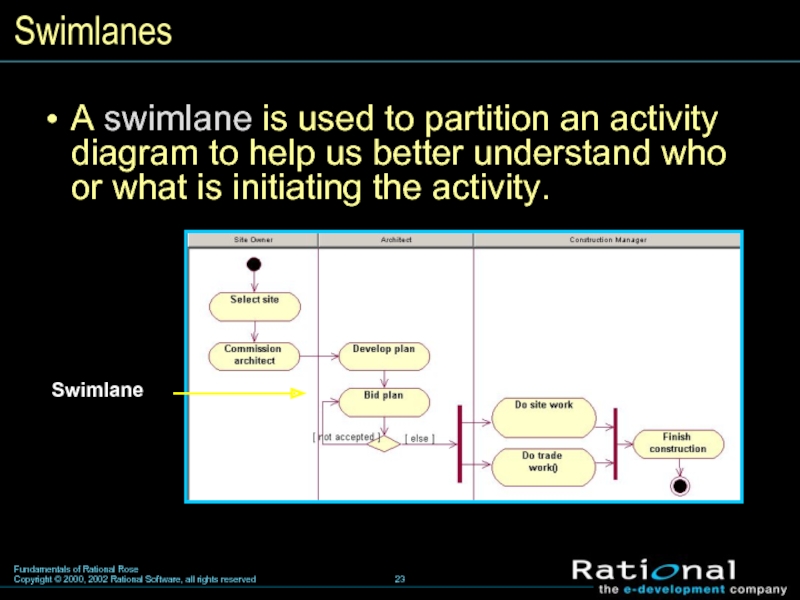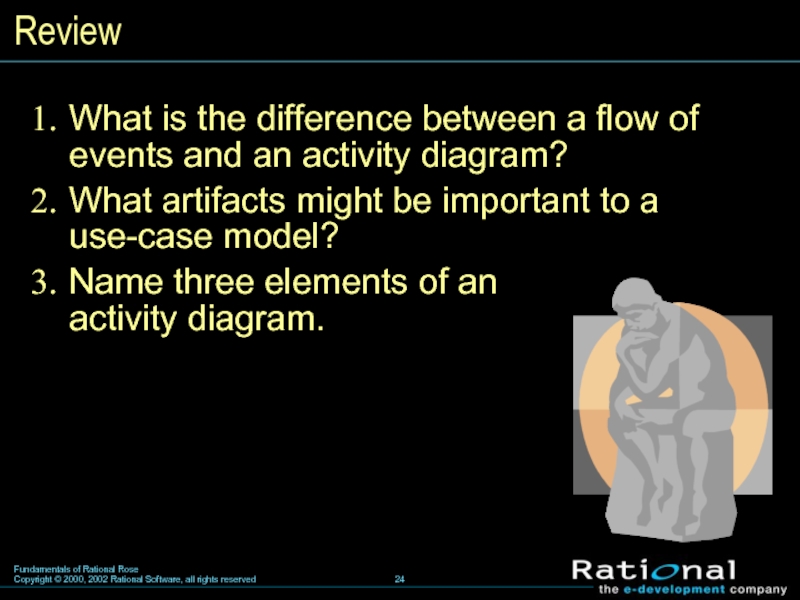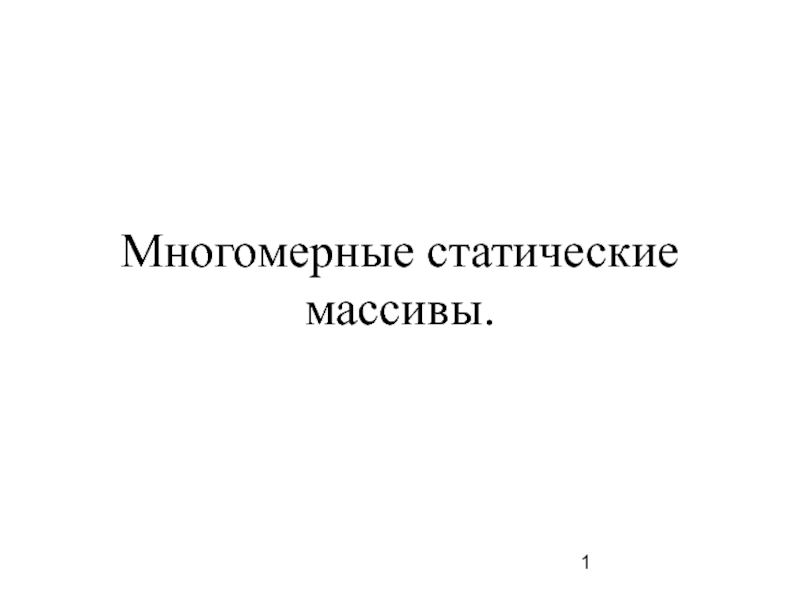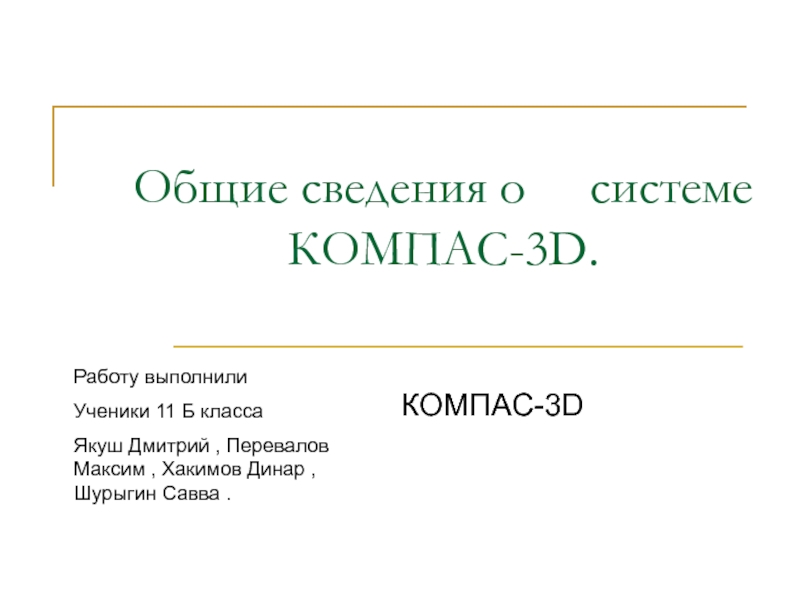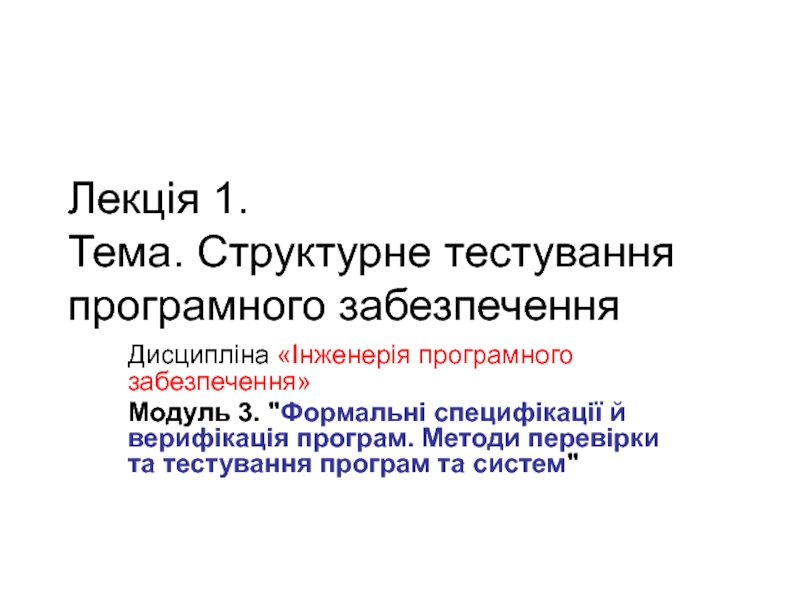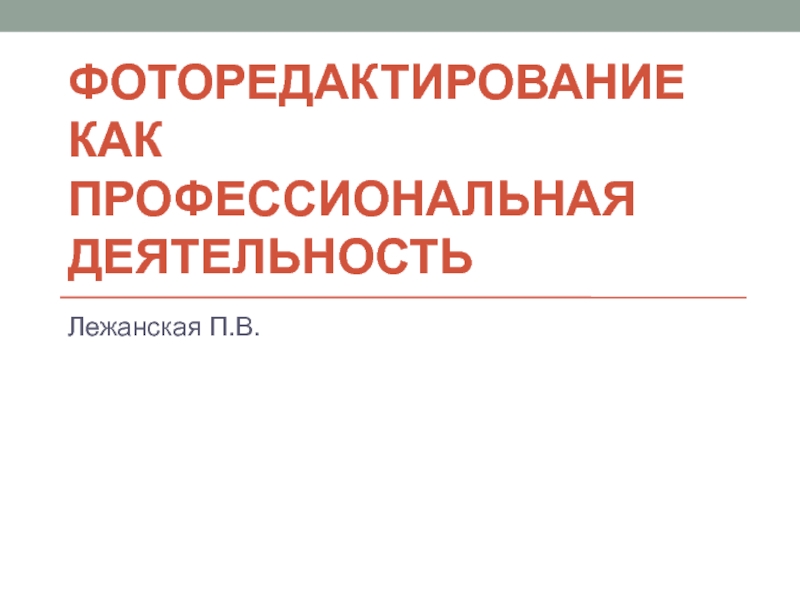- Главная
- Разное
- Дизайн
- Бизнес и предпринимательство
- Аналитика
- Образование
- Развлечения
- Красота и здоровье
- Финансы
- Государство
- Путешествия
- Спорт
- Недвижимость
- Армия
- Графика
- Культурология
- Еда и кулинария
- Лингвистика
- Английский язык
- Астрономия
- Алгебра
- Биология
- География
- Детские презентации
- Информатика
- История
- Литература
- Маркетинг
- Математика
- Медицина
- Менеджмент
- Музыка
- МХК
- Немецкий язык
- ОБЖ
- Обществознание
- Окружающий мир
- Педагогика
- Русский язык
- Технология
- Физика
- Философия
- Химия
- Шаблоны, картинки для презентаций
- Экология
- Экономика
- Юриспруденция
Модель вариантов использования в Rose. (Тема 4) презентация
Содержание
- 1. Модель вариантов использования в Rose. (Тема 4)
- 2. Where Are We? The why and what
- 3. Why Create a Use-Case Model? A
- 4. What
- 5. Where Are We? The why and what
- 6. What Is a Use-Case Diagram?
- 7. A use-case diagram can be modeled
- 8. A use case is a sequence
- 9. An actor is someone or something
- 10. A relationship illustrates a semantic
- 11. Review Why create a use-case model? What
- 12. Where Are We? The why and what
- 13. What Is a Flow of Events?
- 14. What Are Artifacts? Artifacts are
- 15. Where Are We? The why and what
- 16. What Is an Activity Diagram? An activity
- 17. Activity An activity represents the performance of
- 18. Start State A start state explicitly shows
- 19. End State An end state represents a
- 20. State Transitions A state transition shows what
- 21. Decisions A decision is a point in
- 22. Synchronization Bars A synchronization bar allows you
- 23. Swimlanes A swimlane is used to partition
- 24. Review What is the difference between a
Слайд 2Where Are We?
The why and what of a use-case model
Elements of
Flow of events and project artifacts
Elements of an activity diagram
Слайд 3Why Create a Use-Case Model?
A use-case model allows the customer
Consider the use-case model as the visual contract between customer and developer.
Слайд 4
What Is a Use-Case Model?
A
It is created in the Use-Case View and can include the following
Use-case diagrams
Use-case flow of events
Supplemental information
Activity diagrams
Слайд 5Where Are We?
The why and what of a use-case model
Elements of
Flow of events and project artifacts
Elements of an activity diagram
Слайд 6What Is a Use-Case Diagram?
A use-case diagram is an
Слайд 7 A use-case diagram can be modeled in a number
What Is a Use-Case Diagram?
(from List Property)
(from Maintain Profile)
Слайд 8 A use case is a sequence of actions performed
In the UML, a use case is represented by an oval.
Use Cases
Use Case
Слайд 9 An actor is someone or something outside the system
In the UML, an actor is represented by a “stickman.”
Actors
Слайд 10 A relationship illustrates a semantic
connection among model elements.
Relationships
Слайд 11Review
Why create a use-case model?
What are possible sources for developing a
What are the elements of a use-case diagram?
Define a use case.
Слайд 12Where Are We?
The why and what of a use-case model
Elements of
Flow of events and project artifacts
Elements of an activity diagram
Слайд 13What Is a Flow of Events?
A flow of events
In Rose, you include each use case’s flow of events in the Use-Case View.
A flow of events is included under its use- case package in Rose and can be accessed directly from Rose once it’s attached.
Слайд 14What Are Artifacts?
Artifacts are documents, models, or model
In Rose, you will attach only those artifacts important to maintaining the use-case model.
Слайд 15Where Are We?
The why and what of a use-case model
Elements of
Flow of events and project artifacts
Elements of an activity diagram
Слайд 16What Is an Activity Diagram?
An activity diagram in the use-case model
It is essentially a flow chart, showing flow of control from activity to activity.
Flow of Events
This use case starts when the Registrar requests that the system close registration.
1. The system checks to see if registration is in progress. If it is, then a message is displayed to the Registrar and the use case terminates. The Close Registration processing cannot be performed if registration is in progress.
2. For each course offering, the system checks if a professor has signed up to teach the course offering and at least three students have registered. If so, the system commits the course offering for each schedule that contains it.
Слайд 17Activity
An activity represents the performance of a task within the workflow.
In the UML, an activity is represented by a lozenge (horizontal top and bottom with convex sides).
Слайд 18Start State
A start state explicitly shows the beginning of a workflow
There is only one start state.
In the UML, a start state is represented by a solid circle.
Слайд 19End State
An end state represents a final or terminal state on
There can be zero or more end states on an activity diagram.
In the UML, an end state is represented by a bull’s eye.
Слайд 20State Transitions
A state transition shows what activity follows after another.
In the
Слайд 21Decisions
A decision is a point in an activity diagram where guard
In the UML, a decision is represented by a diamond.
Слайд 22Synchronization Bars
A synchronization bar allows you to show concurrent threads in
In the UML, a synchronization bar is represented by a thick horizontal or vertical line.
Слайд 23Swimlanes
A swimlane is used to partition an activity diagram to help
Слайд 24Review
What is the difference between a flow of
events and an
What artifacts might be important to a use-case model?
Name three elements of an activity diagram.

